I've played the Star Trek game of my dreams, and it's a grand strategy game
Star Trek: Infinite mashes Stellaris and Star Trek together into something more delicious than anything you can get out of a replicator.
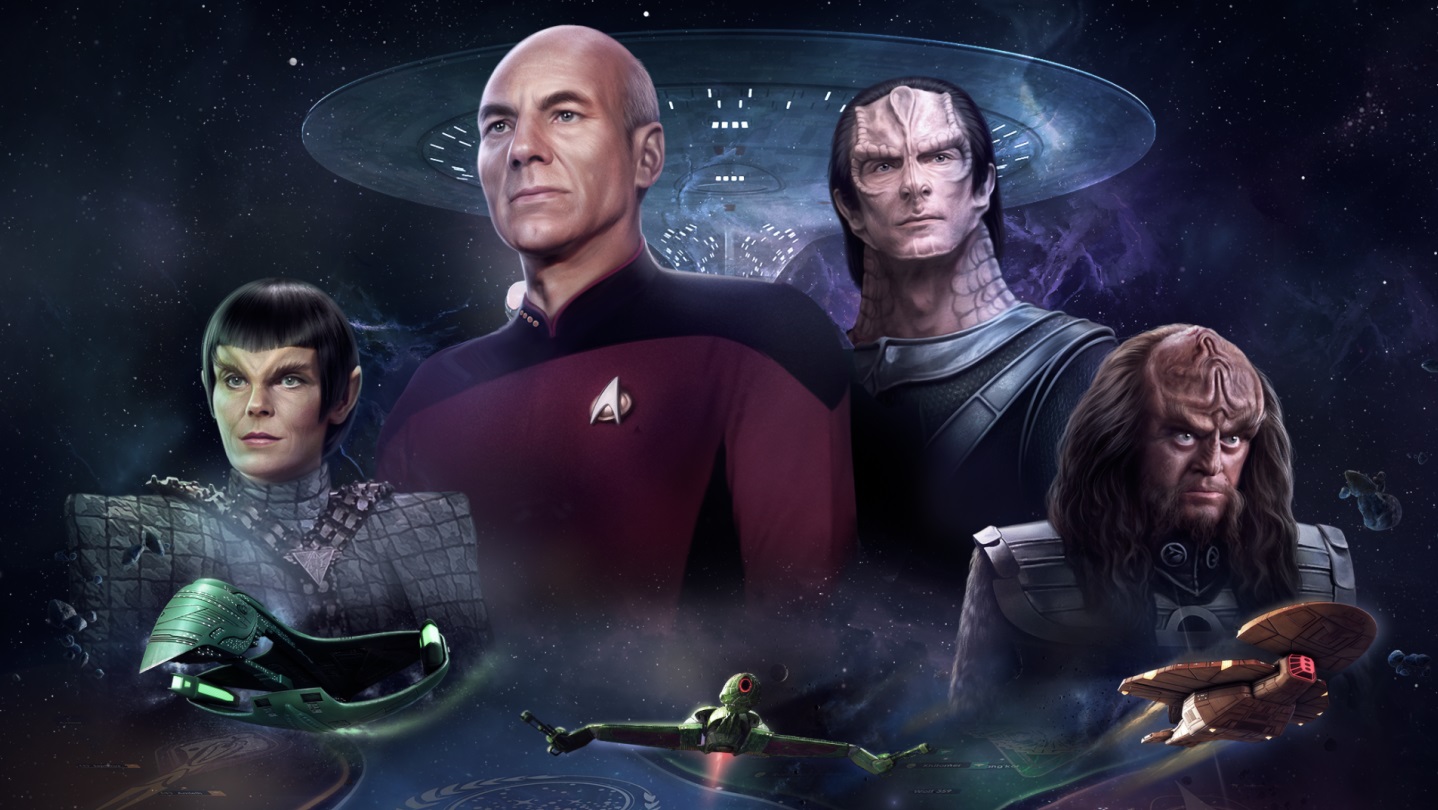
When we first got word back in June that Paradox Interactive was publishing a grand strategy game set in the Star Trek universe, we were just a little bit excited.
It's been a long time since anyone took a crack at making a Star Trek strategy game, which is a crying shame given how well Star Trek lends itself to the mechanics of exploring and colonizing space. I've had a chance to play a preview build of Star Trek: Infinite, and thankfully it's much more than a Stellaris Star Trek mod (something you can already play)—it's a game that puts you smack dab in the middle of one of the most interesting times in Trek history and, in grand strategy style, lets you write your own story.
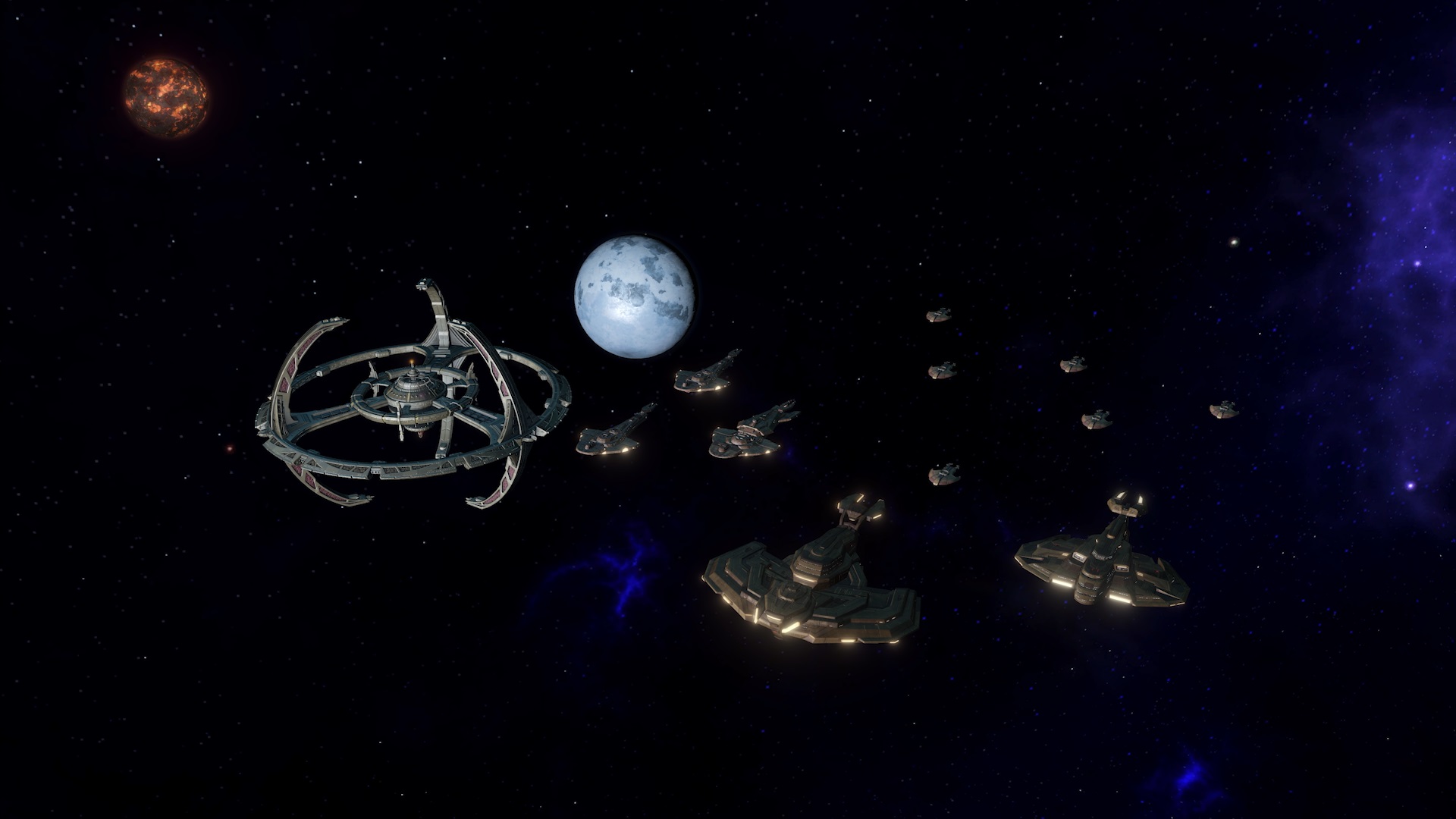
The Stellaris DNA is overt from the moment you start playing.
In Star Trek: Infinite you take control of one of the four major factions in the Alpha quadrant in the year 2340, shortly before the events of The Next Generation. As the Romulans, Cardassians, Klingons, or the Federation, you build colonies, explore the stars, research new technologies, and battle one another for galactic supremacy (or, y'know, peace, if that's your deal).
The developer, Nimble Giant Entertainment, is probably best known for its 2016 Master of Orion reboot, which some of us at PC Gamer would say was a more interesting game (73% from us, "Mostly Positive" on Steam) than its modest popularity indicated. Now working with the Stellaris engine, Nimble Giant is enthusiastic about what Paradox's tech is making possible. "It's not just about the systems, also it's about the stories the player can tell in the game," game director Ezequiel Maldonado tells me. "When we had the opportunity to access Stellaris and combine it with Star Trek, we asked ourselves how can we modify this to tell the best stories possible in the Star Trek universe? That's the main vision for the game."
The Stellaris DNA is overt from the moment you start playing; most of the game's mechanics and systems are going to be extremely familiar if you're a fan. Science ships to explore and survey systems, construction ships to build starbases and claim territory, and myriad mysterious space rocks to collect and devise new technologies from. Edicts, Traditions, and even the byzantine Claim system for acquiring territory in wars all return, but modified to fit a Star Trek mold.

The Traditions, for example, each feature a unique selection only available to one faction—like Progress for the Federation, or Misdirection for the Romulans. The rest are spread into choices: defense or conquest, research or development, commerce or welfare. Some of Star Trek's best stories are about difficult choices, and this structure added to the idea that I was crafting my own unique entry.
Every time I turned a corner in Star Trek: Infinite, I ran into something that reinforced how much Nimble Giant loves the source material. For example, there's a narrative event after you build the Enterprise where Wesley Crusher brings something to your attention and you can tell him to shut up. More materially, each faction has important story beats pulled from the canon, like first contact with the Borg or the Cardassians' turn toward peace after the signing of the Treaty of Bajor. These encounters determine the course of your playthrough, and it's the Mission Tree that lets you explore these stories.
Keep up to date with the most important stories and the best deals, as picked by the PC Gamer team.
The Mission Tree is essentially a quest log. It sets goals for you to accomplish that represent events in the history of your faction. When you achieve them, you unlock further goals and get rewards like permanent bonuses to your faction or massive chunks of resources. These serve to give your game some structure, and further cement each faction's identity. The early missions for the Federation require you to explore lots of star systems and research anomalies, whereas the Klingons are more interested in building a large fleet and recruiting strong leaders to guide it.
The system feels great, and I think it's the beating heart of Infinite. One thing I find myself struggling with in grand strategy games is a sort of lost feeling toward the middle game. This system introduces story beats but also gives you some guidance on what sorts of things your faction likes to be doing and rewards you for doing them. There's an entire section devoted to building the Enterprise from TNG and recruiting its iconic cast, each crew member requiring you to run missions specific to their expertise. Complete them all and you can upgrade the Enterprise to its Sovereign-class version, which is an absolute monster.
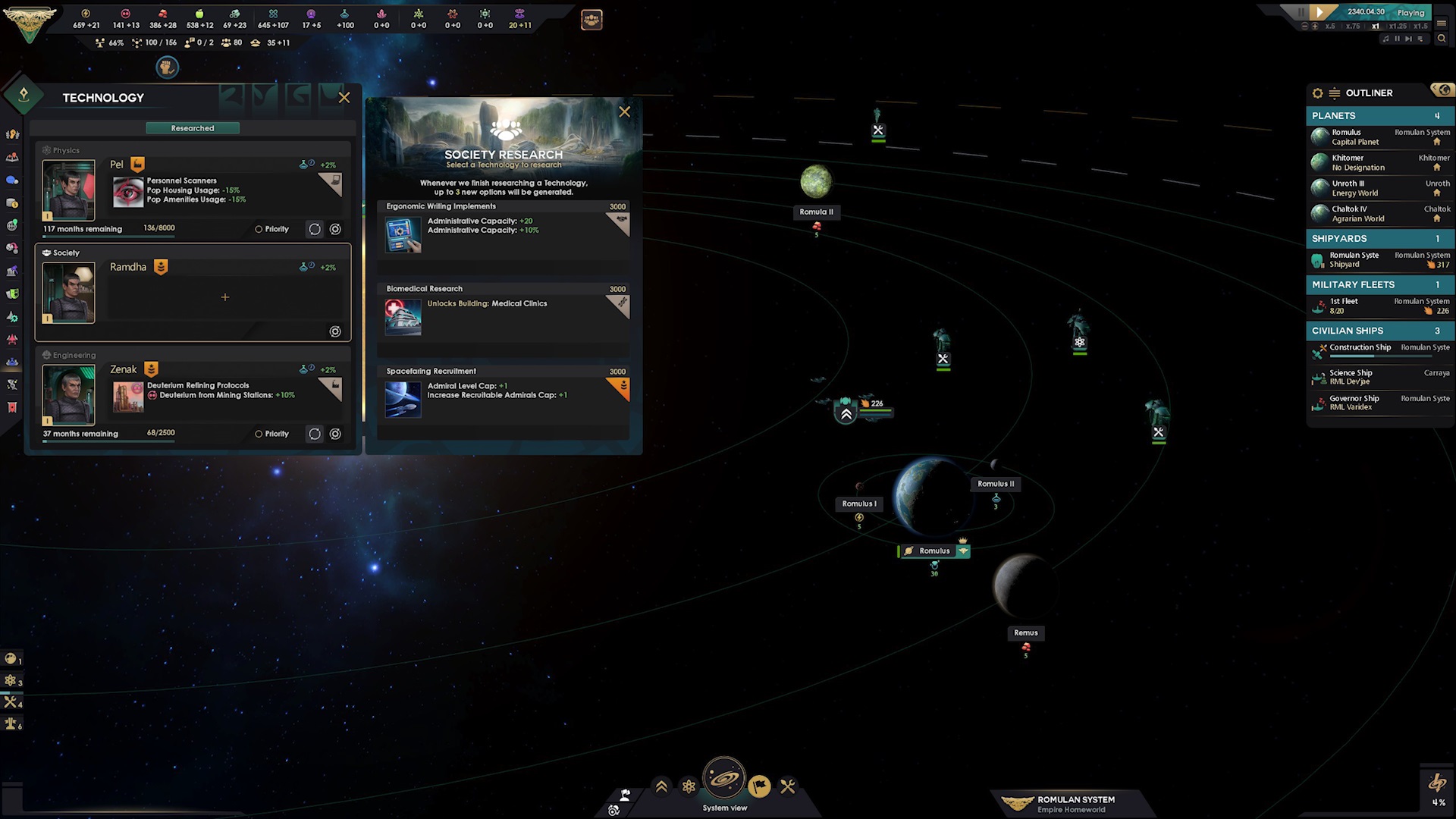
What's encouraging about these narrative systems is that it doesn't seem like you're simply playing out a single-track victory condition for each faction. The Mission Tree branches, and you'll make meaningful decisions within it. Do you embrace the Cardassians' fascist nature, or redeem them and free their enslaved peoples? As the Romulans, do you accept Federation aid when the star by Romulus collapses, or give in to your people's overweening pride and face the consequences? There are only a couple of these for each faction, but they feel like they add meaningful differences to their respective playthroughs.
I decided that my honor would only allow me to do one thing: crush the cowardly Romulans and reclaim the system for the mighty Klingon Empire.
Technical director Andres Ricardo Chamarra told me a bit more about their philosophy of choice in the game. "There are a lot of 'What If' scenarios in Star Trek. If you watch DS9, for example, there are a couple of times the Federation is in danger of going full dark," Chamarra says, referring to the wartime decisions the Federation makes in order to defend itself against The Dominion, like the creation of a military units like Red Squad, which you could say go against Federation doctrine. "All of these moments had a possible alternative, and we wanted to give the players agency by letting them make those decisions." To capture this alternative path, the Mission Tree lets Federation players make a choice between open borders and diplomacy or closed borders and spycraft, leaning into the autocratic possibilities the shows explored.
Early choices can have interesting ramifications further down the line, as I discovered in my Klingon playthrough. The Khitomer Massacre happens right at the start of the campaign, and I decided that my honor would only allow me to do one thing: crush the cowardly Romulans and reclaim the system for the mighty Klingon Empire. I did so ruthlessly and efficiently, and was very pleased with my early advantage until I looked further down the Klingon tree and noticed that I'd eventually have to ally with either the Romulans or the Federation to advance my Mission Tree.
My warmongering had made me an enemy to both, and if I wanted to progress I'd have to do decades of painful diplomatic work. I could always ignore the missions entirely though, and this might be an interesting choice for a run at some point. Winning the game without those bonuses would certainly make for a fun challenge. While this may seem inflexible, I liked the way it structured the story without totally pinning me. Restrictions breed creativity, and I could see games where I was a staunch Federation ally, a bloodthirsty Romulan cat's paw, or even a game where I allied with one only to cruelly betray them later.
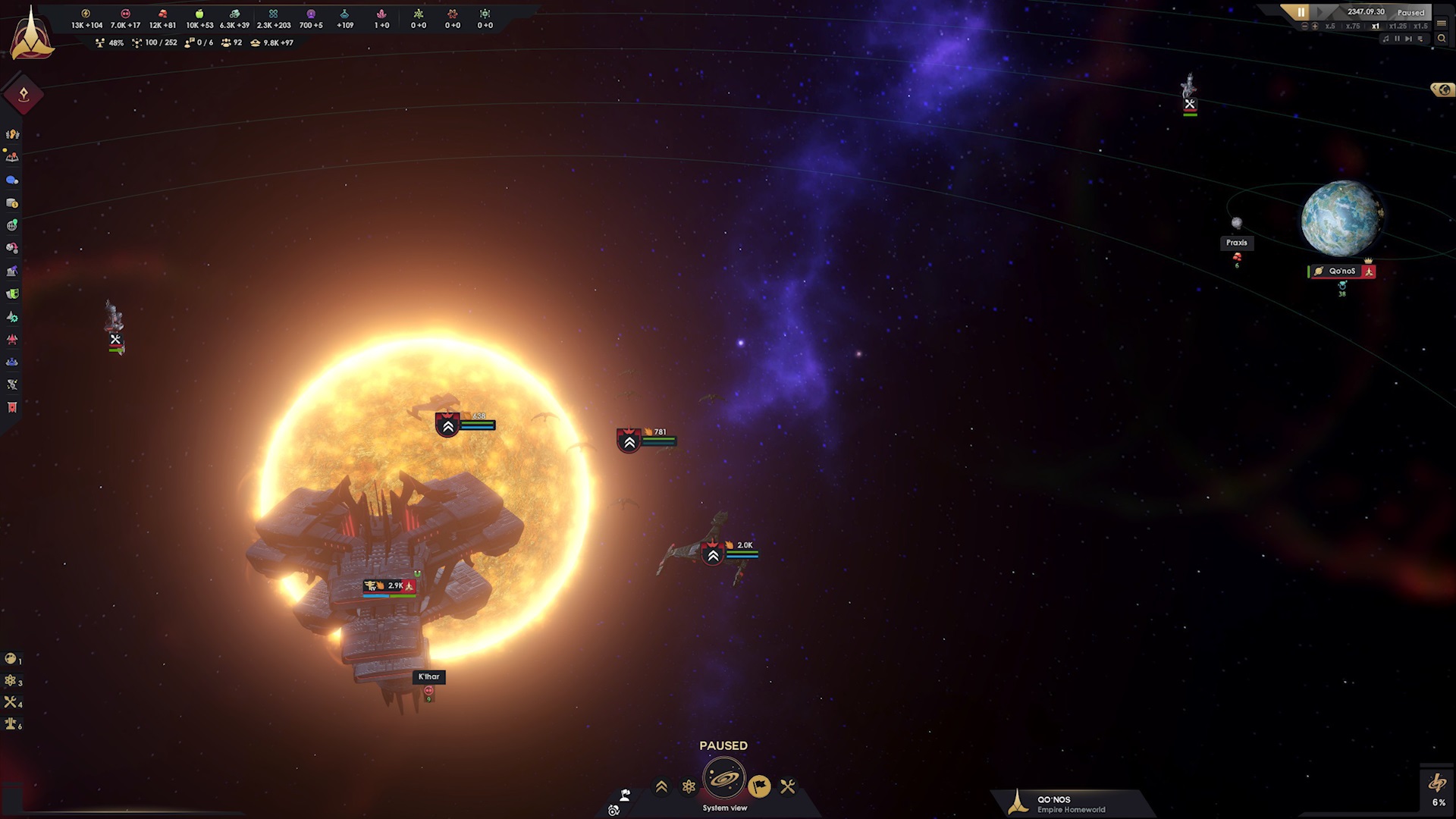
Your actions also influence the decisions the AI makes. In my first game as the Federation, I ignored diplomacy for a while and focused on science and exploration, and the Cardassians left me alone—clearly pursuing their more peaceful mission tree. In my second attempt, I supported Bajoran independence as my very first game action (I really wanted to build DS9), and sure enough a few years later the Cardassians came gunning for me. By the time I reclaimed Denobula from them, I discovered all they had built there were surveillance complexes—they were well on their way toward a dark path.
At first brush, this mixture of lore-accurate starting points with branching decisions is what I'm looking for in a Star Trek grand strategy game. The Bajorans, for example, always appear in between Cardassia and the Federation, with the Betazoids off to one side of the Federation's home space. There are a bunch of other minor factions, including the Ferengi, that are procedurally placed around the map.
Even though there's only a few major macro decisions for each faction, the way they interact with the decisions the other factions are making, the random events that pop up, the wild card minor powers that are randomly generated, and of course the endgame events with the Borg should give the game most of the replayability we expect from the genre. Despite that being the only endgame crisis at the moment, apparently each faction has their own unique ways of dealing with this existential threat.
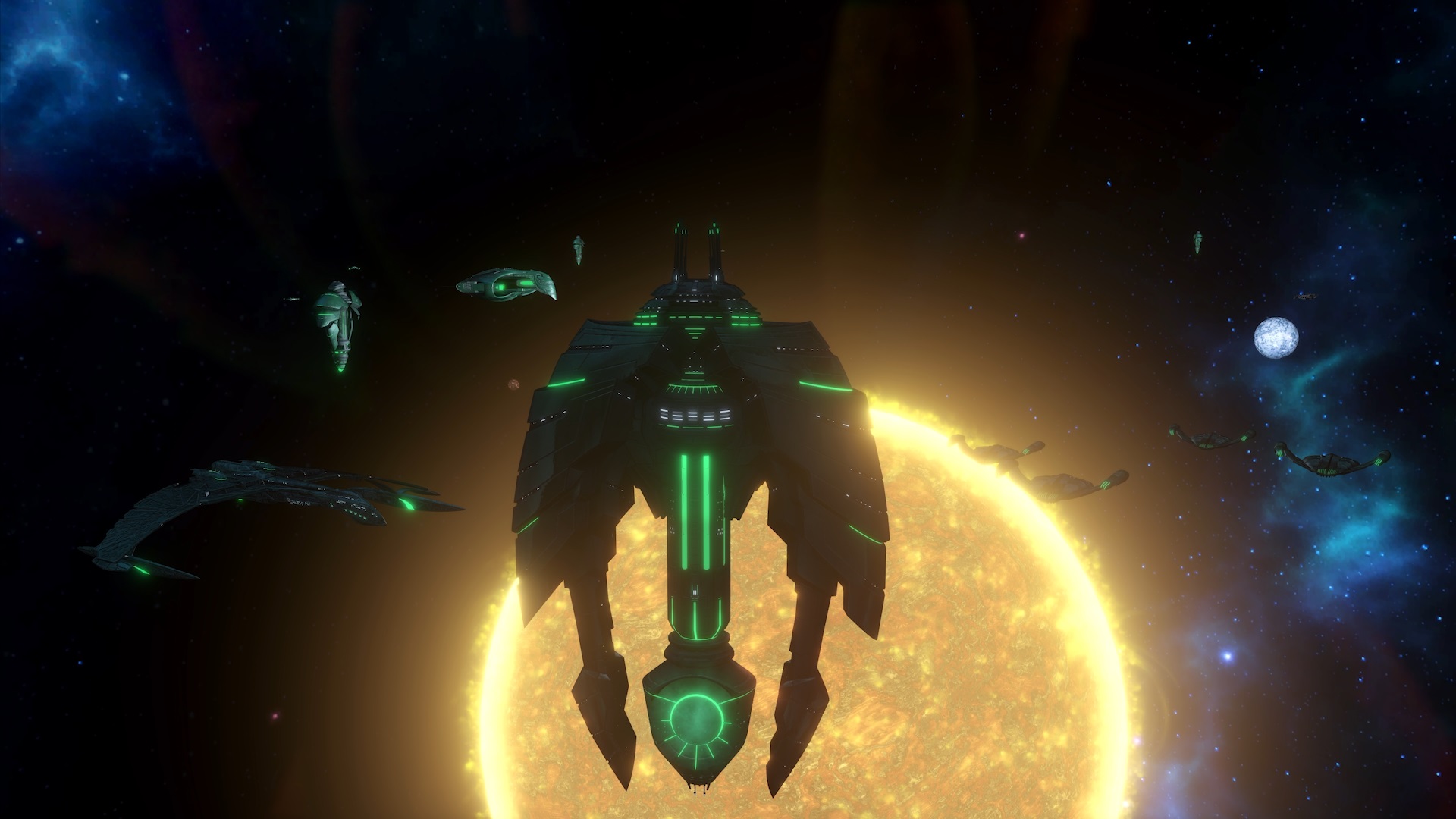
Naturally, I wanted to know whether more of Star Trek's long list of alien races and factions would be appearing in Infinity after launch. Nimble Giant said it isn't commenting on additional factions, but purely speculating, this is the no-brainer direction that Infinite should expand into, given Paradox's 22 DLCs and Story Packs for Stellaris.
Star Trek: Infinite releases on October 12, which makes that a very busy month for Paradox. I'll be checking out the full release for sure, and maybe even the deluxe edition, which apparently comes with a fully voiced Klingon VO (in Klingon) for that campaign. Qapla'!
Russ has been playing PC games since the top of the line graphics were in ASCII and has been obsessed with them just about as long. After a coordinated influence campaign to bamboozle his parents into getting a high speed internet connection to play EverQuest, his fate was well and truly sealed. When he's not writing about videogames, he's teaching karate, cooking an overly complicated dish, or attempting to raise his daughter with a well rounded classical education (Civilization, Doom, and Baldur's Gate, of course). He's probably mapping in Path of Exile right now.

